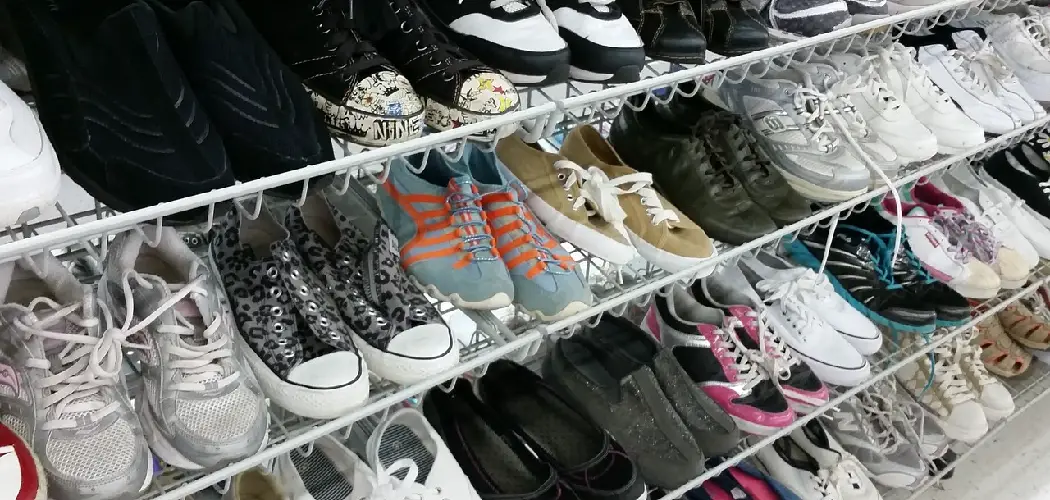Storing shoes properly can help to prevent mold and mildew buildup, which is essential for preserving the quality and condition of your footwear. Molds and mildews thrive in damp and dark environments, so storing your shoes in an area with high humidity levels or inadequate ventilation increases the chances of mold developing on them.
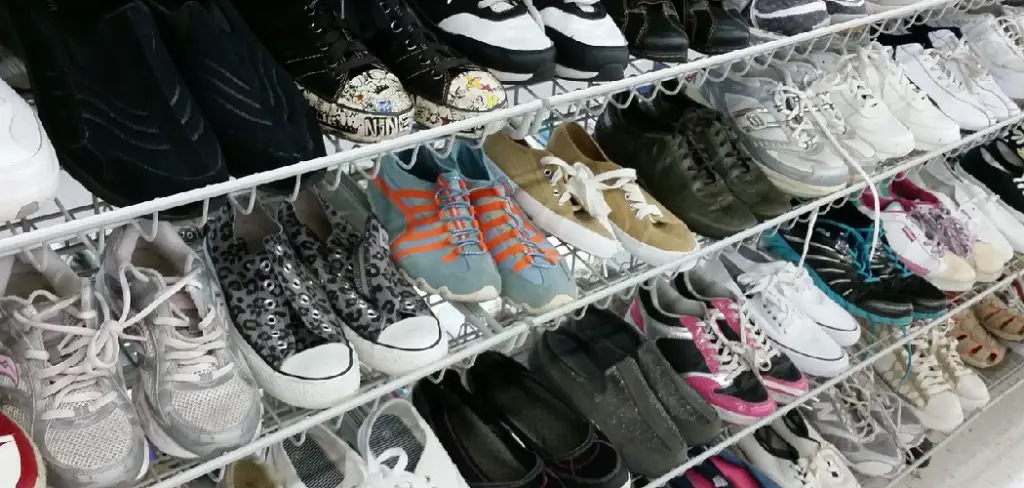
One of the main advantages of learning to store shoes to prevent mold is that it can help reduce the risk of health issues caused by mold. Mold spores can be easily breathed in and inhaled, leading to allergies, asthma attacks, and other respiratory problems.
Mold also has the potential to cause skin irritation and other serious illnesses if left unchecked. You can find step-by-step instructions on how to store shoes to prevent mold in this blog article.
Step-by-step Instructions for How to Store Shoes to Prevent Mold
Step 1: Inspect the Shoes
Before storing your shoes, make sure to inspect them for any signs of accumulated dirt or mold growth. Be sure to clean off any visible dirt and disinfect the inside with a mild cleaner before storing. Always store your shoes in an area that is dry. Excess moisture can cause mold growth on the fabric and leather of a shoe.
Step 2: Use Containers or Bags
Store your shoes in either breathable fabric bags or hard containers to help protect them from dust, moisture, and dirt. It’s also important to avoid plastic bags as they can trap moisture and lead to mold growth. Put some drying agents, such as silica gel packets or cedar chips, inside of the bags or containers to help absorb excess moisture.
Step 3: Store at Room Temperature
Make sure to keep your shoes in an area that is not too hot or too cold. Storing them in extreme temperatures can cause damage to the material and make them more prone to developing mold.
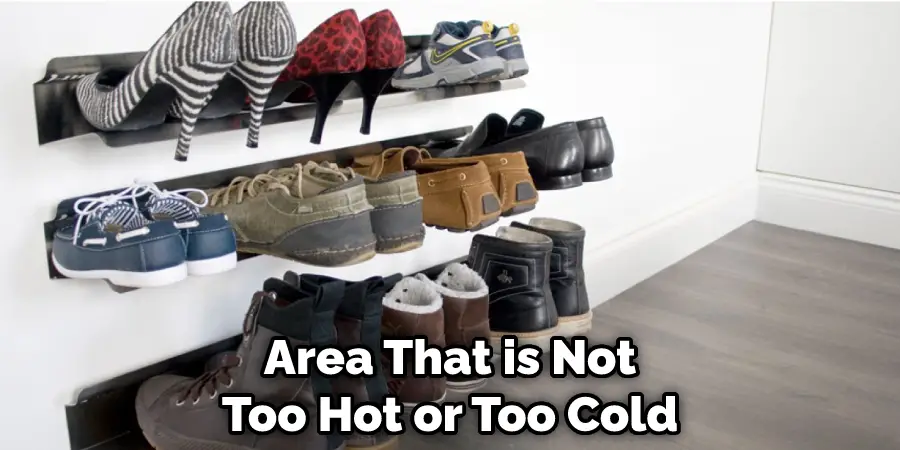
Keep your stored shoes clean by taking them out of storage once in a while and giving them a wipe-down with warm, soapy water. This will help prevent any dirt build-up or moisture accumulation.
Step 4: Don’t Use Hangers
When storing your shoes, avoid using hangers as this can cause the material to stretch and weaken, making it more susceptible to mold. Instead of hanging them up, place your shoes on shelves in an upright position. This will help keep the shape of the shoe intact while protecting it from dust, dirt, and moisture.
Step 5: Sunlight is Your Friend
It’s a good idea to store your shoes in an area that gets plenty of sunlight as this will help naturally dry out any moisture accumulation or dampness inside the shoe. If you notice signs of mold growth, throw the shoes away and replace them with a new pair. This will help protect your health from any potential mold-related illnesses.
Following these steps can help keep your shoes safe from developing any unwanted mold. By inspecting, storing them correctly, and replacing them when necessary, you can ensure that your shoes remain in good condition for many years to come.
Tips for How to Store Shoes to Prevent Mold
- Keep shoes away from wet and damp areas. Avoid storing them in basements, garages, or any other area where moisture can collect.
- Check all shoes for signs of water damage before storing them. If they are wet, dry them completely with a clean cloth before putting them away in storage containers or boxes.
- Place shoe trees or newspaper inside the shoes to help keep their shape and absorb any moisture that may accumulate.
- Ensure there is adequate ventilation in the storage area by leaving a space between boxes and crates of shoes.
- Store metal containers away from plastic ones, as they can rust over time due to humidity.
- Avoid storing leather shoes in plastic containers as they tend to trap moisture and encourage mold growth.
- If possible, store your shoes in a cool, dry place such as an attic or closet to further reduce the risk of mold growth.
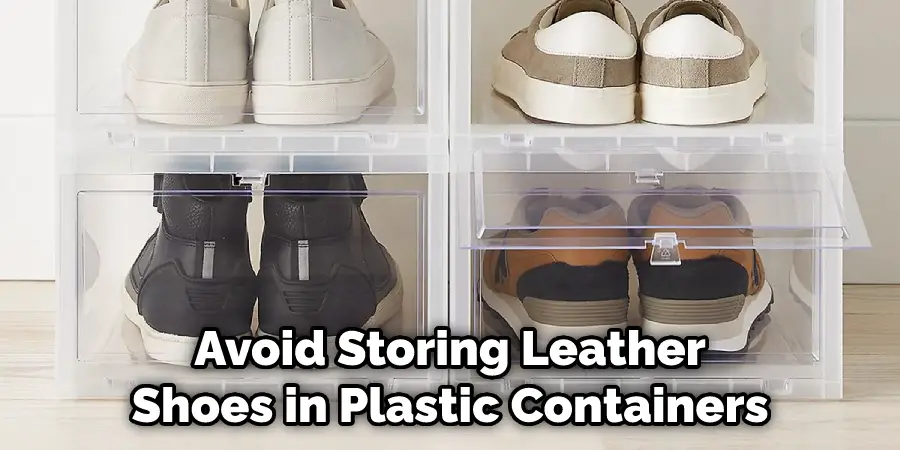
Following these tips can help you ensure your shoes are stored safely and mold-free. It is also important to regularly check for signs of moisture or mold in the storage area and take appropriate action if needed.
What is the Best Way to Store Shoes in a Damp Environment?
When protecting shoes from mold in a damp environment, the best way is to keep them off the ground. Shoes should be stored on a shelf or in an elevated space that allows for some air circulation.
This will help to prevent moisture and mold spores from accumulating in and around the shoe material. Additionally, you should wrap your shoes in plastic or fabric bags to reduce the amount of air and moisture that can reach them.
If storing your shoes in a damp environment, make sure to check them regularly for signs of mold. If you find any, be sure to clean them off with a mild cleaner and let them air dry thoroughly before putting them away. It is best to store shoes at room temperature and keep them away from direct sunlight or heat. This will help to prevent mold formation.
If you are storing leather shoes, it is a good idea to use a protective cream on the exterior of the shoe material. This will help protect the leather and reduce moisture buildup. When storing suede or fabric shoes, use a cloth or paper bag to protect them from dirt and dust.
How Often Should You Clean and Air Out Your Shoes?
To ensure that your shoes don’t get moldy, it’s important to clean and air them out on a regular basis. Depending on the type of shoes you have and how often you wear them, this timeline can vary from every few days to once a month. Here are some tips for cleaning and airing out your shoes:
- Clean the inside of your shoes with a damp cloth and mild detergent to remove sweat and dirt. Then, use a shoe brush or soft cloth to buff the leather surface if you have leather shoes. Finally, use a dry cloth to wipe away any remaining cleaner residue.
- Take out insoles and laces before cleaning and airing out your shoes. This will give the entire a chance to dry out completely.
- Once you’ve cleaned your shoes, put them in an area with good air circulation and away from direct sunlight. A balcony or terrace is ideal for this purpose. Let the shoes air out for at least one full day before putting them away.
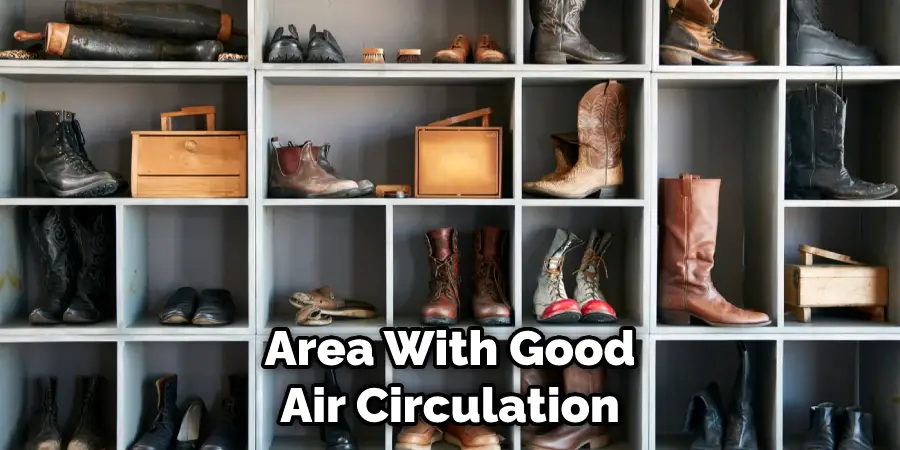
These simple steps can help you keep your shoes in good condition and reduce the chances of mold growth.
How Often Should You Inspect Your Stored Shoes for Signs of Mold Growth?
It is important to inspect your stored shoes for signs of mold growth on a regular basis. While most footwear will not be exposed to high moisture levels and therefore should remain relatively mold-free, there are times when an environment can become humid enough that mold spores start to take root. In order to protect yourself and your belongings, it is wise to inspect your stored shoes at least once a month.
When inspecting your stored shoes for signs of mold, look for any discoloration or musty odors that could be indicative of mold growth. Be aware that some molds will be visible on the outer surface of the shoe, while other types may only become evident when the shoe is opened or taken out of its storage container.
Pay particular attention to any dark spots, as these could be indicative of mold growth. If you spot any signs of possible growth, it is best to clean the shoes/or discard them if necessary to prevent further damage.
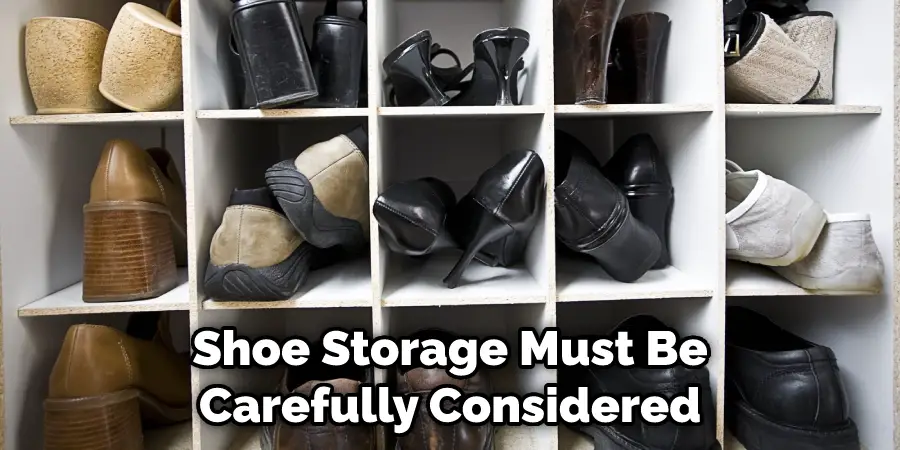
Conclusion
The primary disadvantage of storing shoes in order to prevent mold is that it requires extra space. Mold can develop quickly and spread easily, so shoe storage must be carefully considered.
In addition, certain types of materials used for shoes are more susceptible to mold growth than others. For example, leather and synthetic materials will generally become damp more quickly and can be more susceptible to mold growth.
In conclusion, it is important to take the necessary steps to store your shoes to prevent mold from forming. Inspect any signs of mold growth before storing your shoes, and always keep them dry in a cool, well-ventilated area.
If you’re able to, also try wrapping your shoes in plastic or newspaper as extra precautionary measures. It’s also beneficial to keep your shoes off the ground by using a shoe rack or shelf for storage. I hope this article has been beneficial in learning how to store shoes to prevent mold. Make Sure the precautionary measures are followed chronologically.

